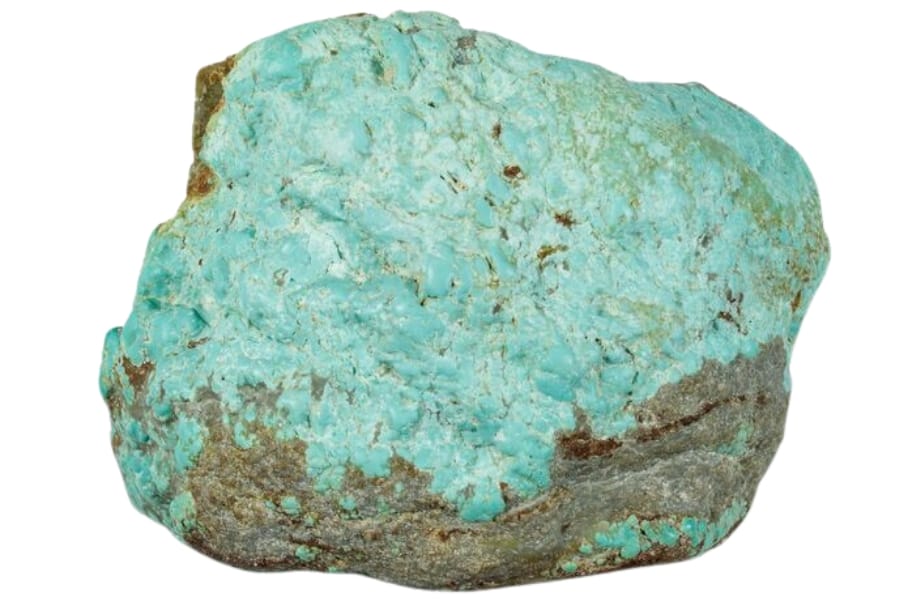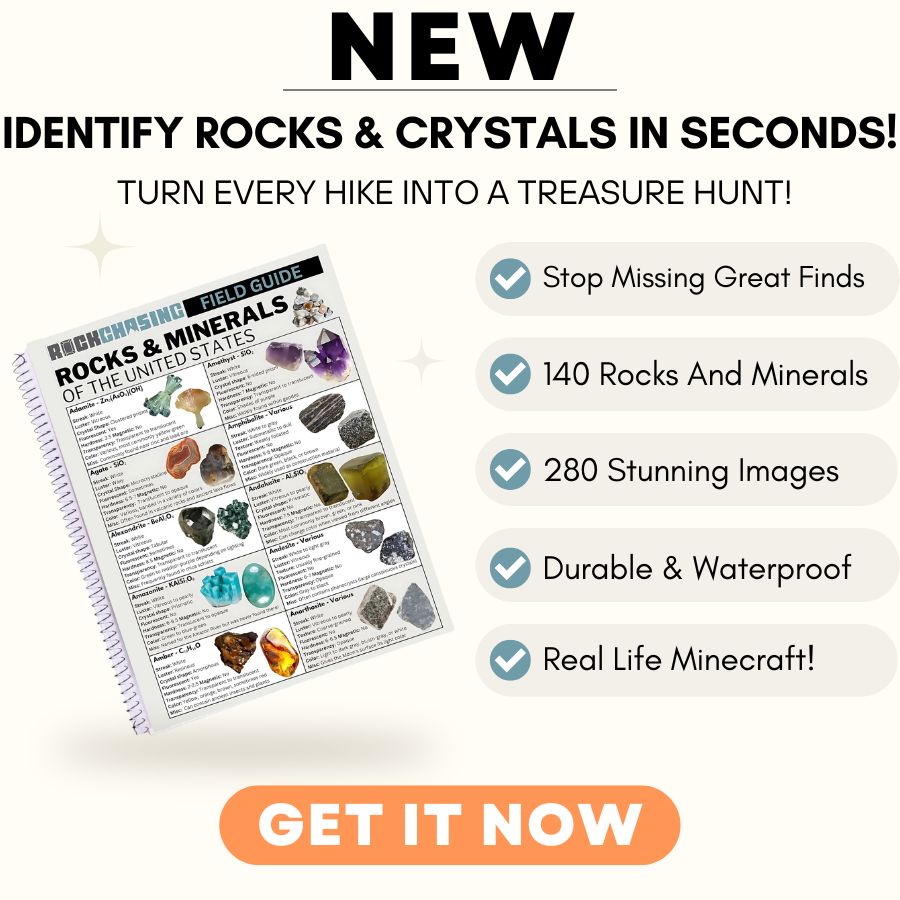Turquoise is a beautiful blue-green stone that has captured the hearts of many. Here in our state, with its diverse landscapes and rich geological history, hunting for turquoise can be an exciting adventure.
This article will guide you to the best spots for finding turquoise in our state and share helpful tips to make your search successful.
So, let’s dive in and explore the best places where you can find Turquoise easily!
How Turquoise Forms Here
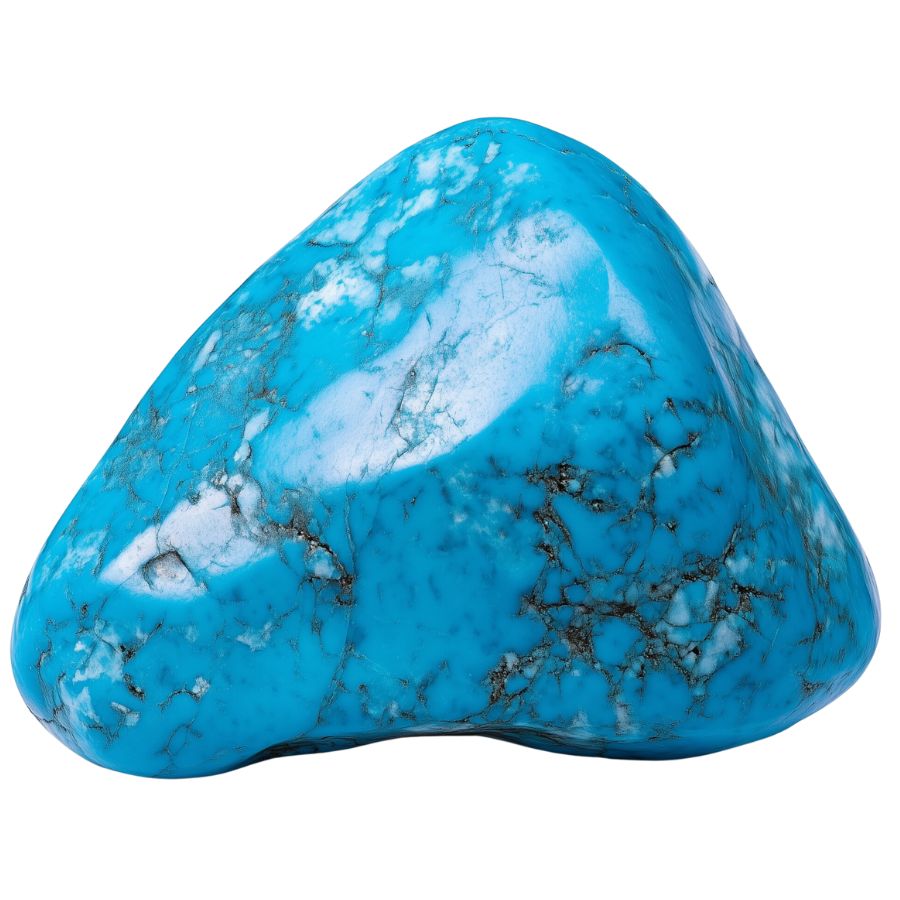
Turquoise forms through a unique process involving water and minerals. It begins when acidic water seeps into the ground, moving through rocks that contain copper and aluminum.
As this water interacts with these minerals, it breaks them down and allows the copper and aluminum to combine with phosphorus, creating turquoise.
This usually happens in shallow areas, often less than 20 meters deep, where the environmental conditions are just right.
This mineral typically fills cracks and cavities in rocks, often in dry, desert-like areas. The presence of iron can also influence its color, giving it beautiful shades of blue and green.
Over time, the turquoise hardens, resulting in the stunning gem we see today, prized for its vibrant hues and unique patterns.
The Types Of Turquoise Found in the US
Turquoise comes in a variety of stunning types, found in the US as well as in our state. Here are the types of turquoise found in the US:
Kingman Turquoise
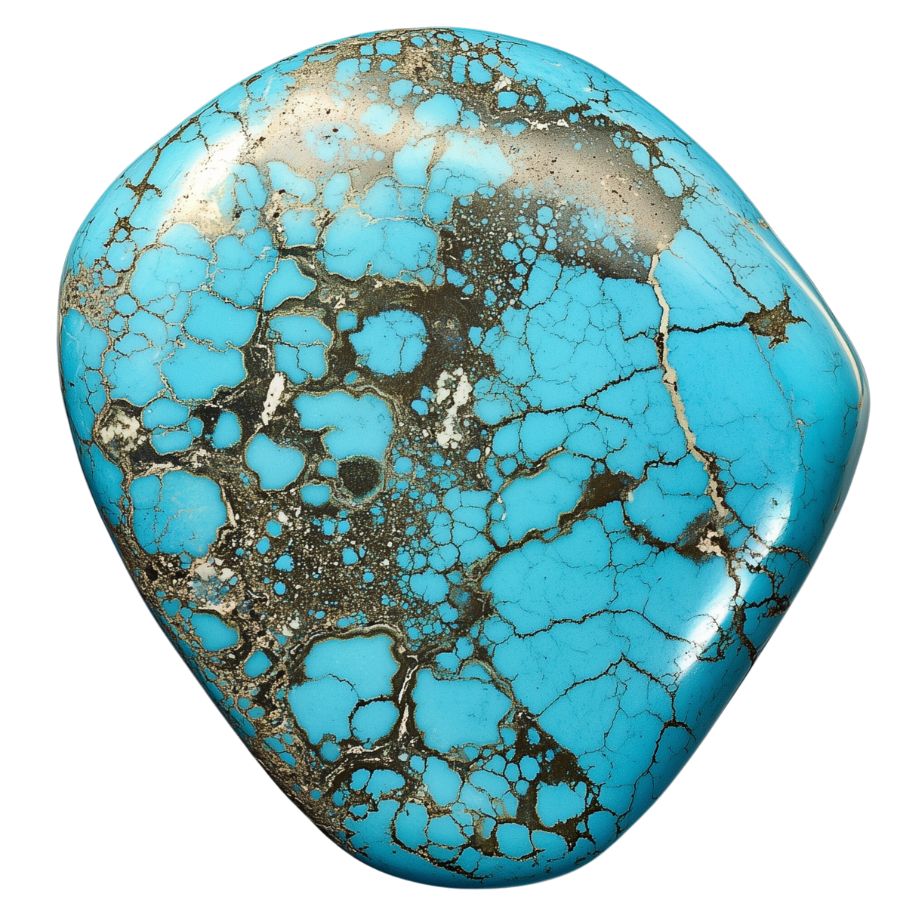
Kingman Turquoise showcases a vibrant range of colors from pale green to deep “high blue.” Its matrix patterns can include white, light brown, or black veining, setting it apart from other turquoise types.
This stone is often stabilized to enhance its durability and color, allowing for broader use in jewelry making. The natural Kingman turquoise typically presents a medium blue hue with a water web matrix.
Kingman Turquoise is recognized as one of the most sought-after American turquoise. Its consistent supply has made it a staple in Native American jewelry and artisan crafts, contributing to its ongoing popularity.
Carico Lake Turquoise
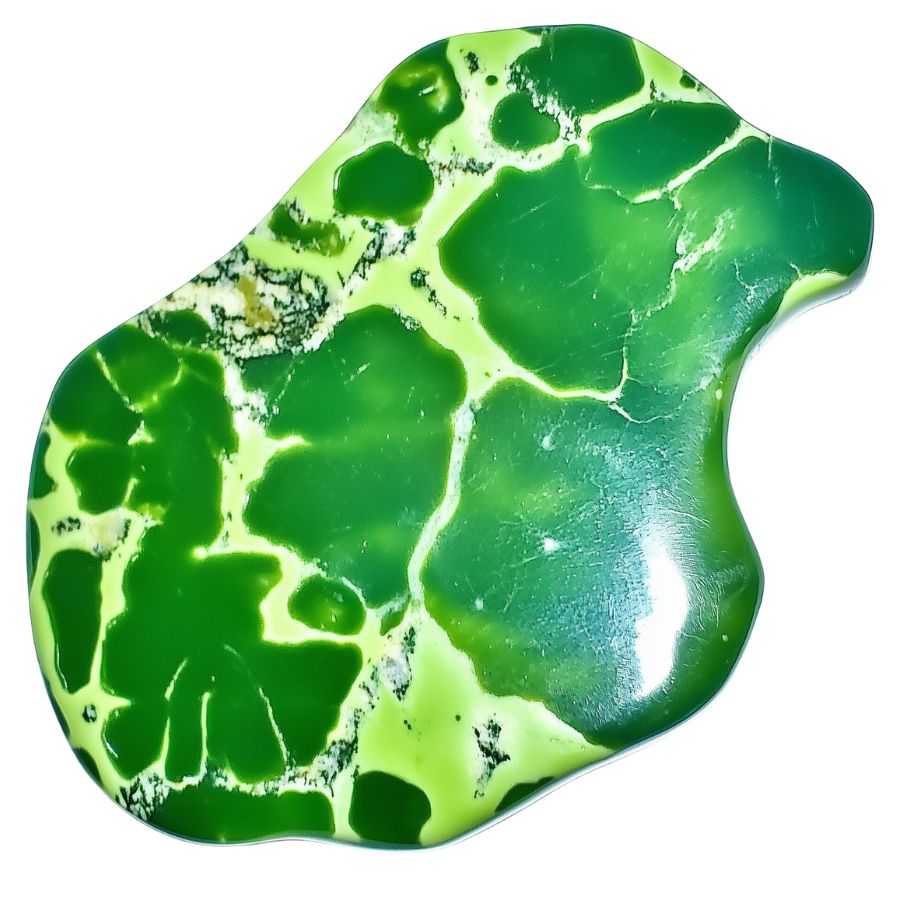
Carico Lake Turquoise is known for its clear robin’s egg blue to vibrant lime green colors. It often features a unique spider-web matrix in brown or, more rarely, black, adding texture and shine to the stone.
What makes this stone special is its high zinc concentration, which gives it an electric lime-green hue. This color is both rare and desirable among turquoise varieties.
Gem-quality Carico Lake Turquoise is scarce, making up less than 3% of the mine’s annual output. This rarity, combined with its natural beauty, makes it a prized item for collectors and enthusiasts alike.
Lone Mountain Turquoise
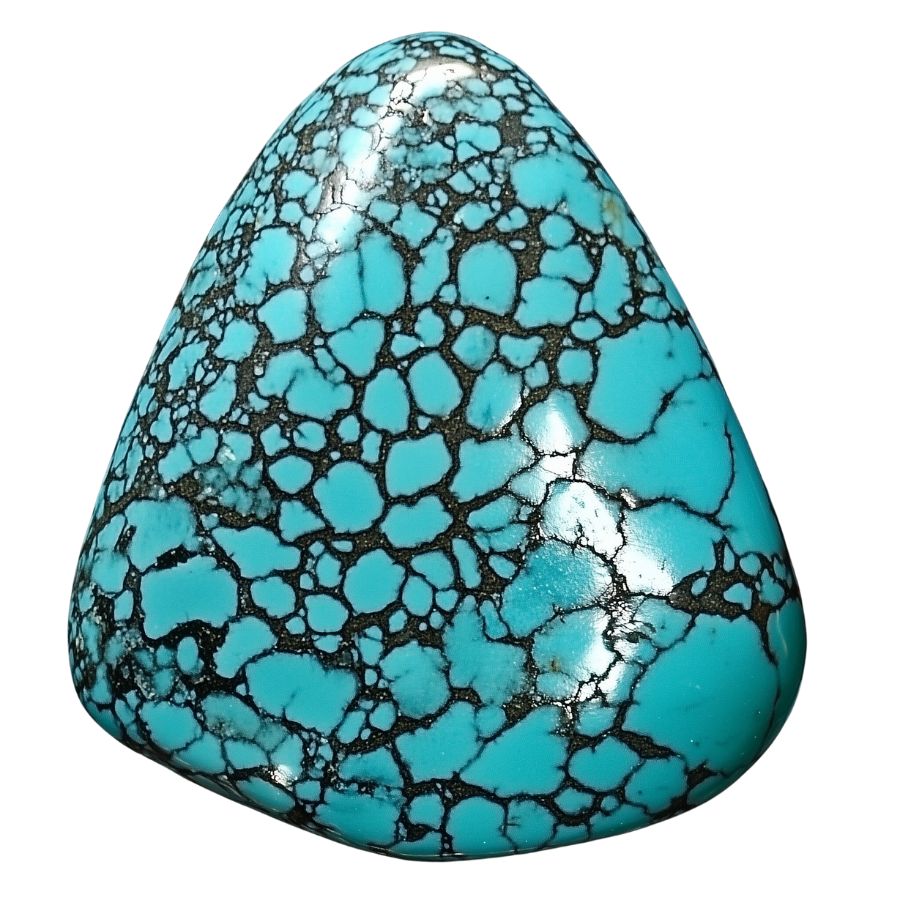
Lone Mountain Turquoise is known for its bright blue to deep green colors, often featuring intricate spider web matrix patterns. These fine lines create a web-like design, enhancing its visual appeal.
This stone stands out for its exceptional hardness and color retention. It maintains its vibrant hue over time, a quality not common in all turquoise varieties.
Lone Mountain Turquoise is highly valued in the collector’s market, second only to Lander Blue Turquoise. Its ability to produce high-quality spider web turquoise makes it a favorite among jewelry artisans and collectors.
Morenci Turquoise
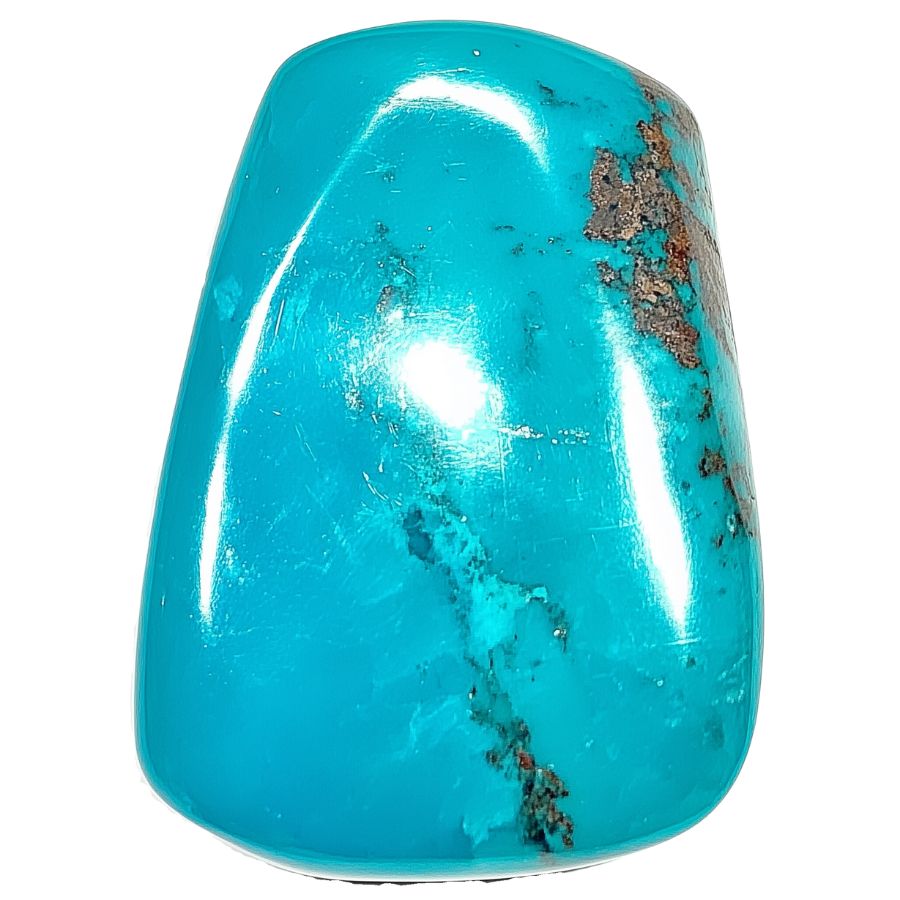
Morenci Turquoise stands out with its deep blue color, a result of its high copper content.
Its most striking feature is the iron pyrite matrix, which gives it a metallic shimmer when polished. Some pieces also show a water web matrix, creating dark blue webbing patterns.
This stone is no longer mined, making it rare and highly collectible. All available Morenci Turquoise comes from mining operations that stopped in 1984.
High-grade pieces, known for vibrant blues and pyrite matrix, make up less than 10% of the total yield.
Pilot Mountain Turquoise
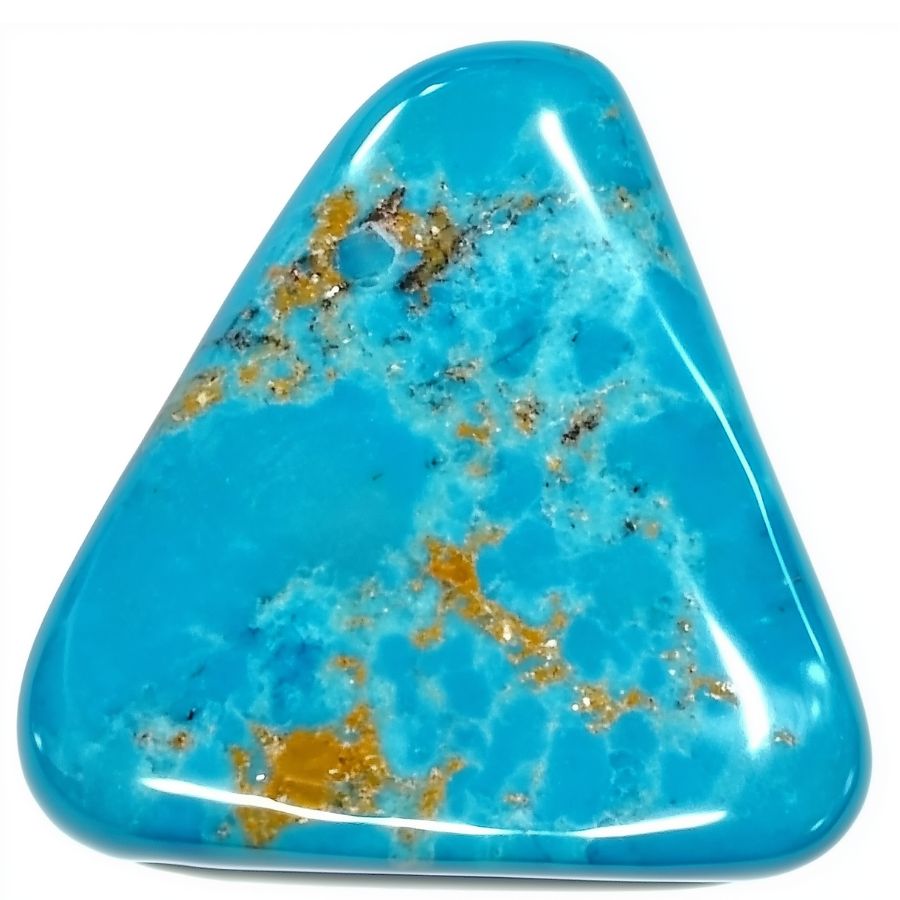
Pilot Mountain Turquoise catches the eye with its bright to dark blue hues, often showing a greenish tint.
What makes it special is its brownish-red limonite matrix, creating beautiful mottled patterns. The stone forms in hard veins, thin seams, or nuggets.
This turquoise has an interesting history, first mined around 1930. It’s known for its limited availability, with only 150 to 200 pounds of rough stone extracted twice a year. This scarcity adds to its appeal.
The unique mottled patterns of the limonite matrix make Pilot Mountain Turquoise a favorite for decorative pieces and jewelry.
Sleeping Beauty Turquoise
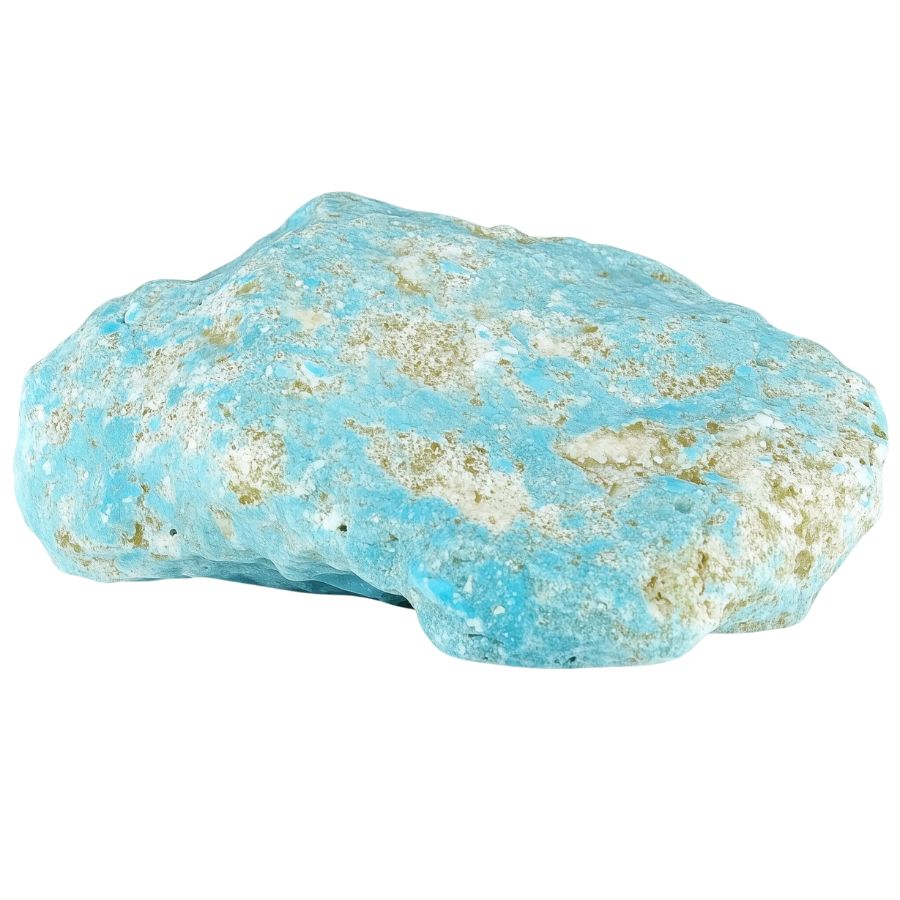
Sleeping Beauty Turquoise is famous for its vivid sky-blue color. Unlike many other turquoise types, it has little to no veining or matrix, giving it a pure, consistent look. The color can range from light robin’s egg blue to deeper sky blue.
This stone is naturally hard, which means it doesn’t need stabilization for use in jewelry. This quality makes it popular with jewelers. The Sleeping Beauty mine closed in 2012, making the stone rarer and more valuable.
Sleeping Beauty Turquoise became a hit in the 1970s and 80s, used in both Native American jewelry and mainstream fashion. Its consistent quality and vibrant color have made it a standard in Southwestern jewelry.
Bisbee Turquoise
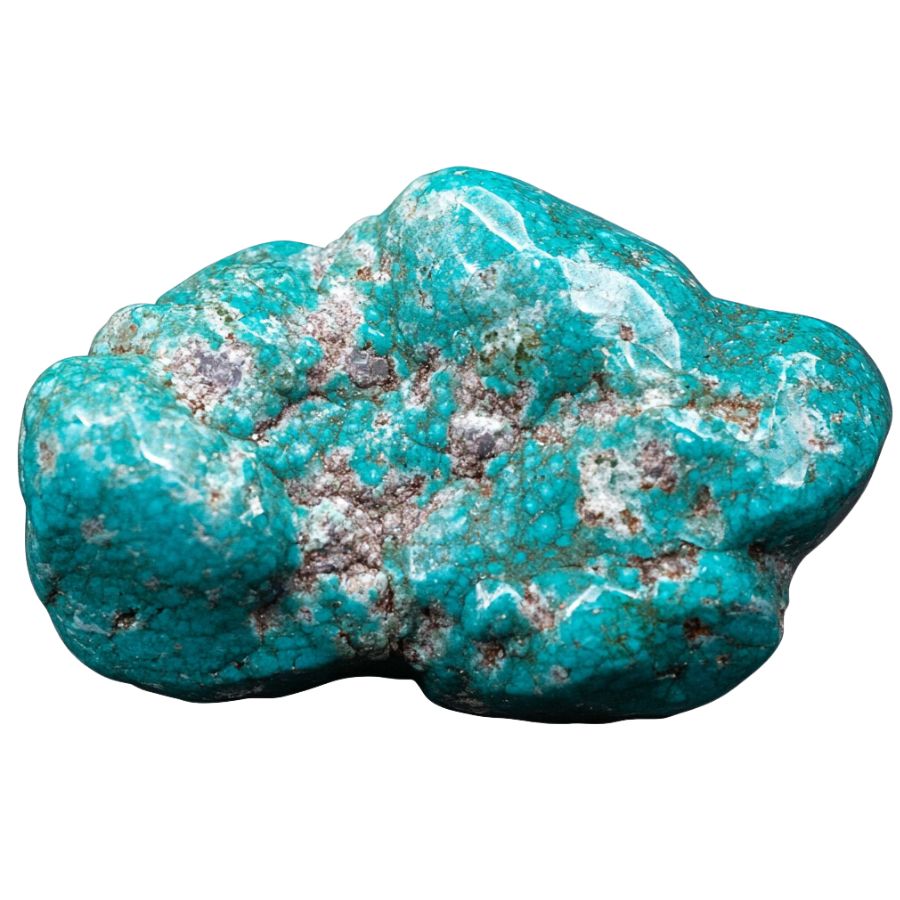
Bisbee Turquoise stands out with its vibrant blue shades, ranging from deep indigo to light robin’s egg blue. Green hues are less common but still occur.
Its distinctive matrix often displays a striking spiderweb pattern against a reddish-brown backdrop.
This stone’s unique appearance comes from its host rock color and gloss. Unlike some turquoise with metallic matrices, Bisbee’s matrix is typically more earthy and varied in color.
Bisbee Turquoise is highly valued for its quality and rarity. Its historical significance, being one of the oldest turquoise sources in North America, adds to its appeal among collectors and enthusiasts.
Royston Turquoise
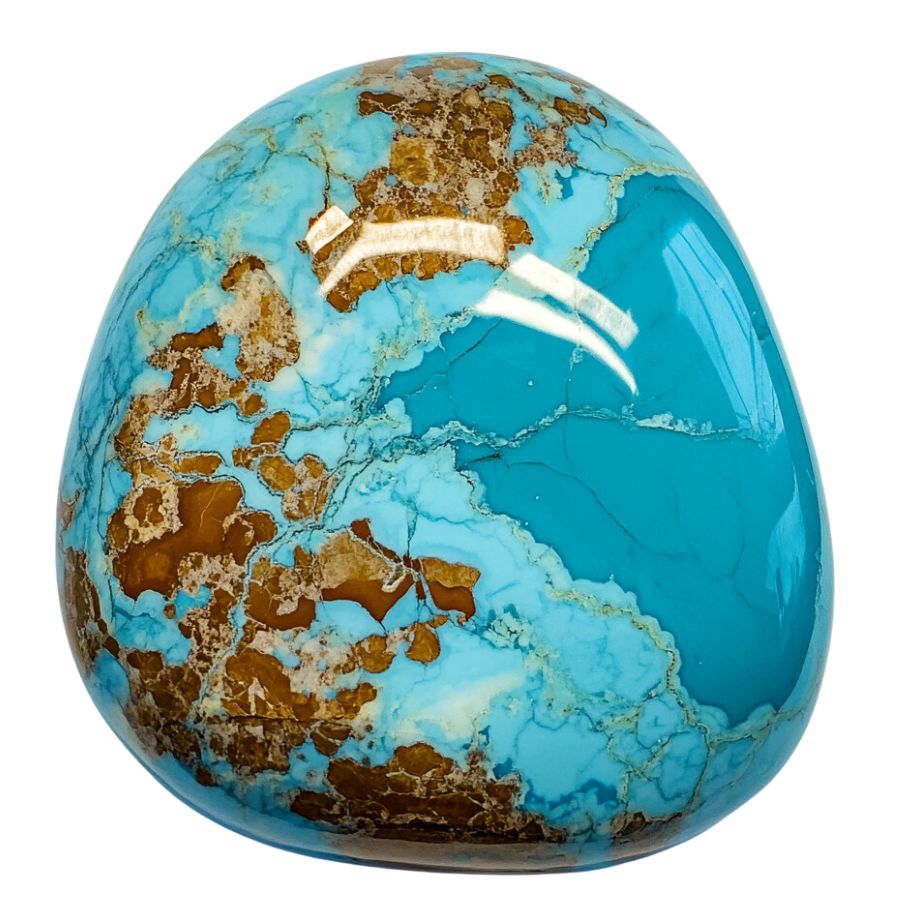
Royston Turquoise is a gem of many faces. Its colors can shift dramatically, even within a single stone.
You might find a piece that starts as a soft blue and gradually transforms into a rich green. This color play is a hallmark of Royston Turquoise.
The stone’s matrix is equally fascinating. The matrix can create intricate landscapes within the turquoise, resembling golden sunsets or stormy skies.
Royston Turquoise is also known for its ability to take an exceptionally high polish. This quality, combined with its natural hardness, makes it a favorite for jewelry that can withstand daily wear.
Dry Creek Turquoise
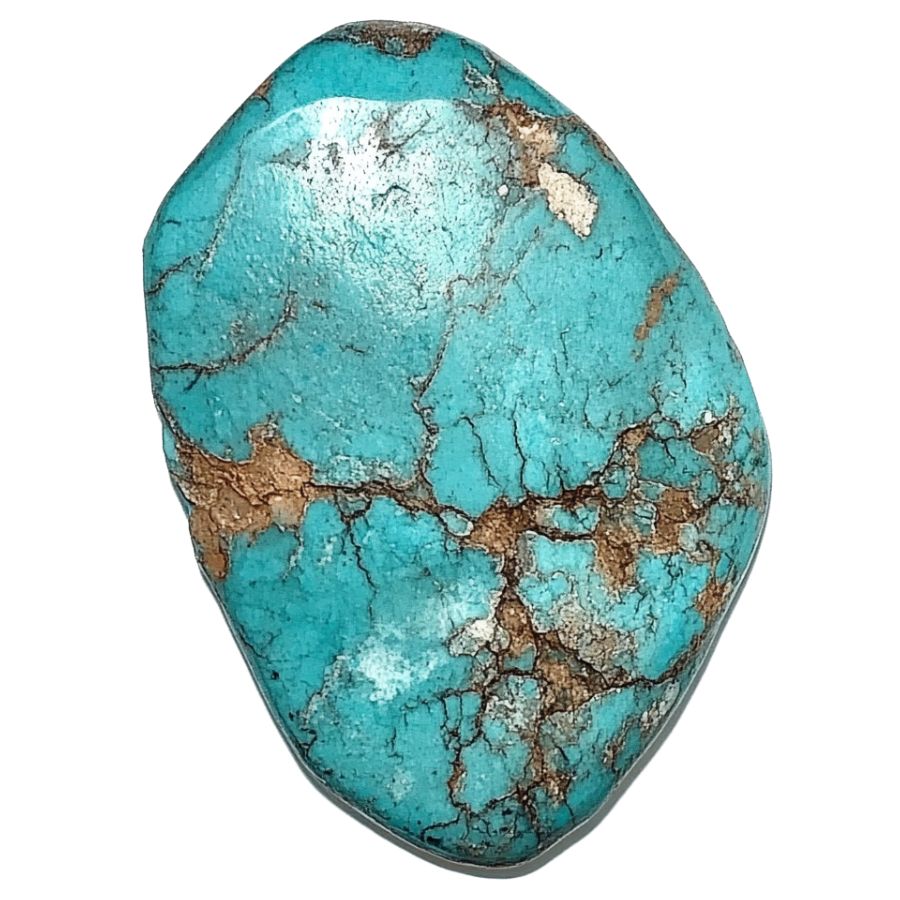
Dry Creek Turquoise stands out with its pale pastel blue color, similar to Larimar. It often has light brown, golden yellow, or orange webbed matrices, adding to its beauty.
Unlike many turquoise types, it’s naturally hard and takes a stunning polish without treatment.
This stone is quite rare. It was discovered in the 1990s in an area with low levels of heavy metals. These metals usually give turquoise its bright colors. The unique geological setting results in Dry Creek’s captivating pale blue hue.
The natural hardness and ability to take a high polish make Dry Creek Turquoise special.
Ithaca Peak Turquoise
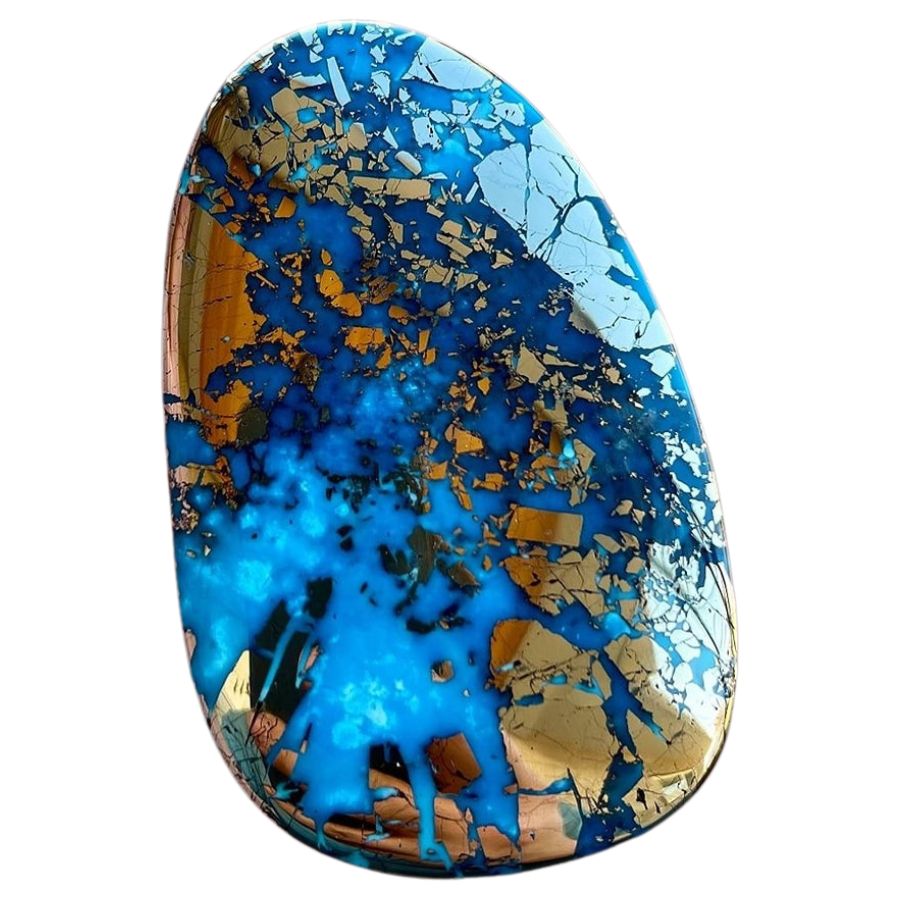
Ithaca Peak Turquoise is known for its stunning range of blues. It can be light blue with black spider-webbing or deep rich blue with black matrix.
Some pieces even have quartz matrix and pyrite inclusions. The most valued stones have vibrant to dark blues with good pyrite inclusions.
What makes this stone unique is its pyrite. In Ithaca Peak Turquoise, the pyrite often has a brassy color. This helps tell it apart from similar stones like Morenci turquoise.
Recently mined Ithaca Peak Turquoise looks different from older pieces. The new stones are lighter blue to green and usually don’t have a webbed matrix. This change in appearance over time adds to the stone’s interesting history.
What Raw Turquoise Looks Like
When you’re going to collect the raw turquoise, it’s important to know what to look for. Let’s talk about how you can identify genuine raw turquoise.
You only need to know a few things in order to find it, but having a guide will be very helpful.
DON'T MISS OUT ON ANY GREAT FINDS!
While you're out searching for Turquoise you're going to find A LOT of other interesting rocks and minerals along the way. The last thing you want to do is toss out something really interesting or valuable. It can be easy to misidentify things without a little guidance.
You absolutely need a good reference guide in order to understand what you're looking at!
We've put together a fantastic field guide that makes identifying 140 of the most interesting and valuable rocks and minerals you will find REALLY EASY. It's simple to use, really durable, and will allow you to identify just about any rock and mineral you come across. Make sure you bring it along on your hunt!
Now, back to the identification specifics:
Look for the Blue-Green Color
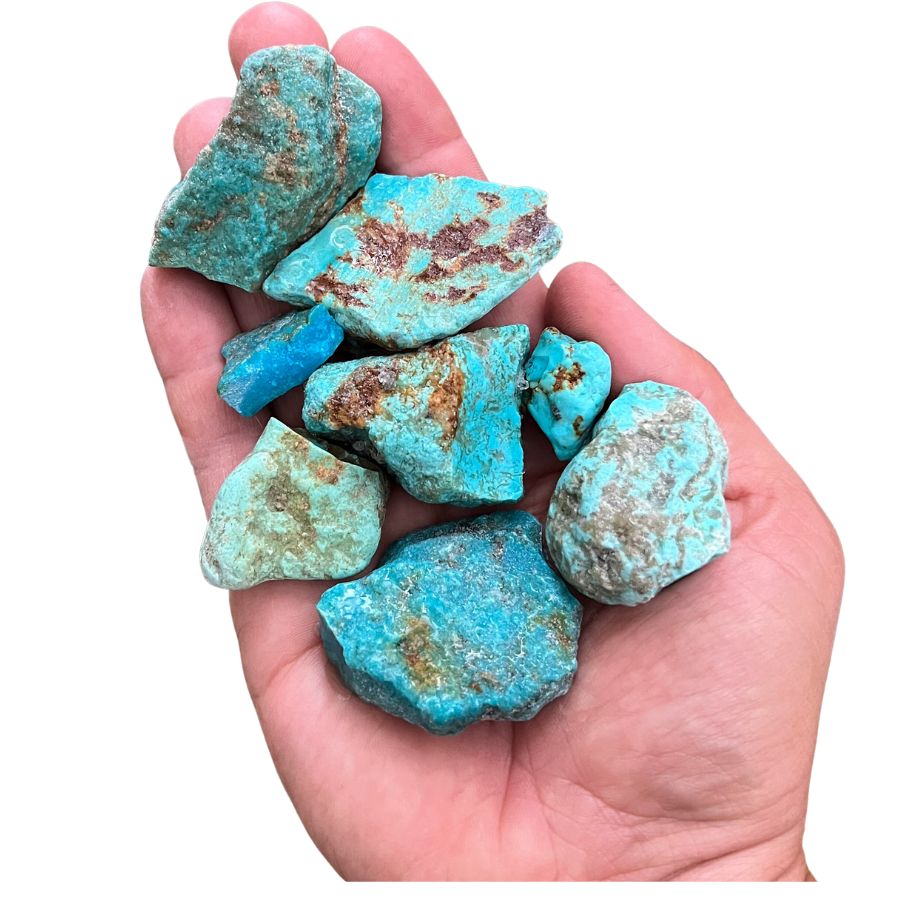
The color is the big clue. Rough turquoise is often blue or green, sometimes with hints of both.
The blue comes from copper, while the green hints at more iron or other minerals.
Real turquoise tends to have a more vibrant, consistent color. If it looks too perfect, like solid blue or green with no variations, be cautious. Nature isn’t that perfect!
Assess the Density and Weight
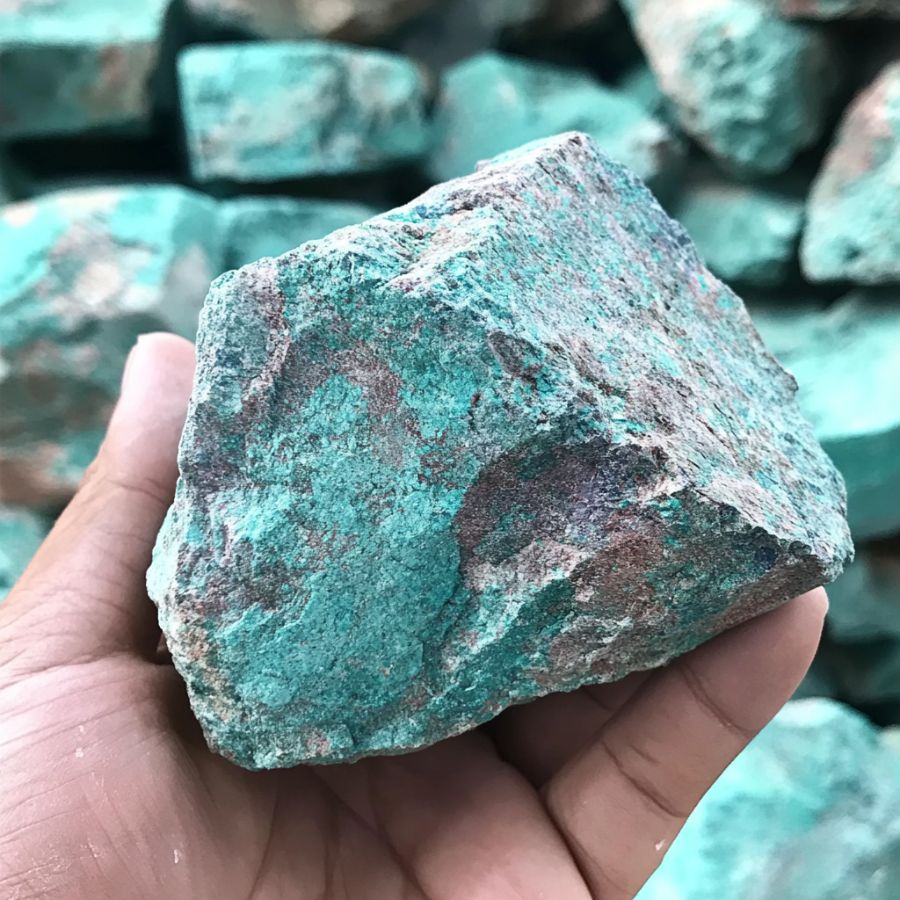
Pick up the stone and feel its weight. Real turquoise is pretty dense, so it feels heavier than it looks. If the stone feels too light, it might not be genuine.
Authentic turquoise has a specific gravity of about 2.5 to 2.9, making it heavier than many imitations.
The density comes from the minerals packed tightly together over millions of years. A heavier stone usually means a better-quality piece.
Check for a Glassy or Waxy Luster
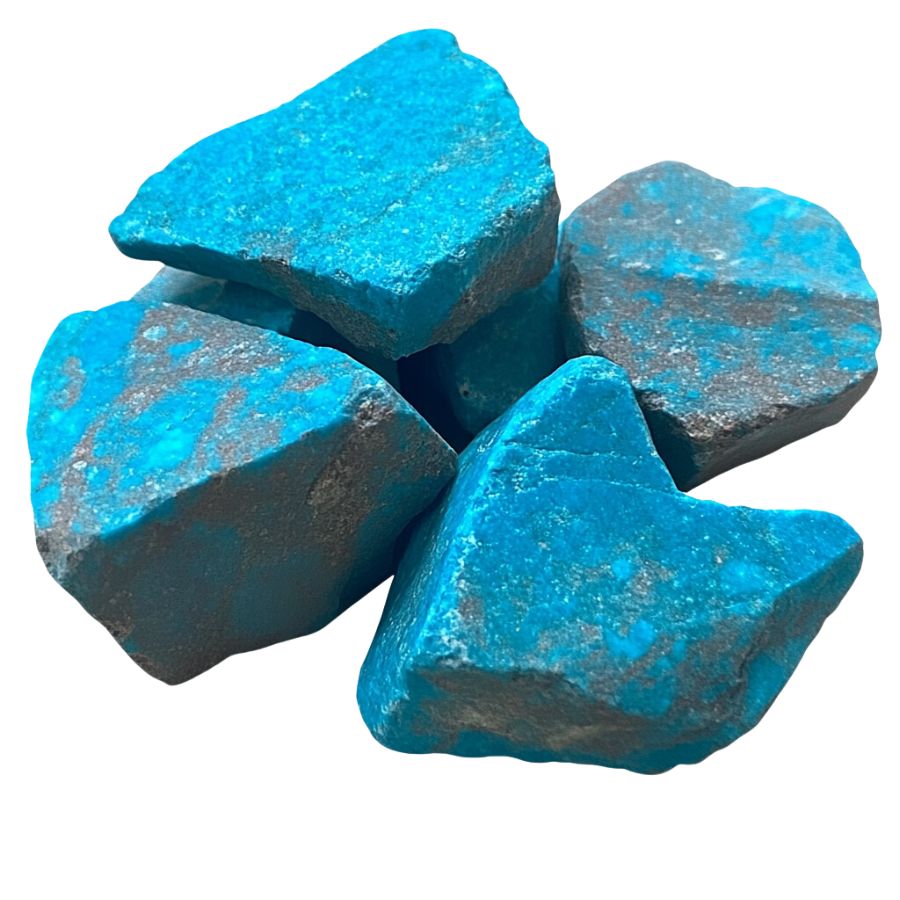
Rough turquoise often has a glassy or waxy luster, not too shiny but not dull either. When you hold it up to the light, the surface might have a soft, smooth sheen. This luster is key.
A rough piece with a good luster usually indicates that it’s real turquoise and not a fake. You’ll notice that it reflects light in a muted way, not too bright.
Consider the Stone’s Shape and Texture
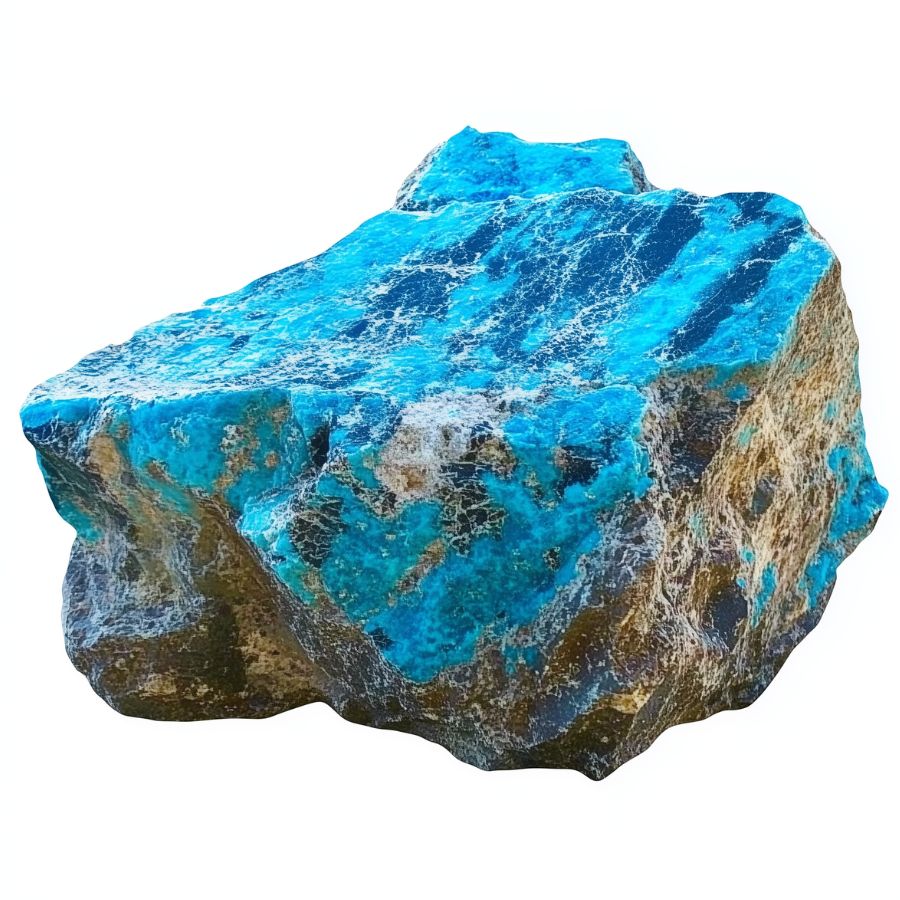
Rough turquoise isn’t always smooth. It often has a bumpy, uneven texture because it forms in cracks and crevices of other rocks.
The stone’s shape might be irregular or lumpy. This natural texture is a telltale sign that you’re holding real turquoise and not a polished or treated piece.
A Quick Request About Collecting
Always Confirm Access and Collection Rules!
Before heading out to any of the locations on our list you need to confirm access requirements and collection rules for both public and private locations directly with the location. We haven’t personally verified every location and the access requirements and collection rules often change without notice.
Many of the locations we mention will not allow collecting but are still great places for those who love to find beautiful rocks and minerals in the wild without keeping them. We also can’t guarantee you will find anything in these locations since they are constantly changing.
Always get updated information directly from the source ahead of time to ensure responsible rockhounding. If you want even more current options it’s always a good idea to contact local rock and mineral clubs and groups
Tips on where to look
Once you get to the places we have listed below there are some things you should keep in mind when you’re searching:
Riverbeds
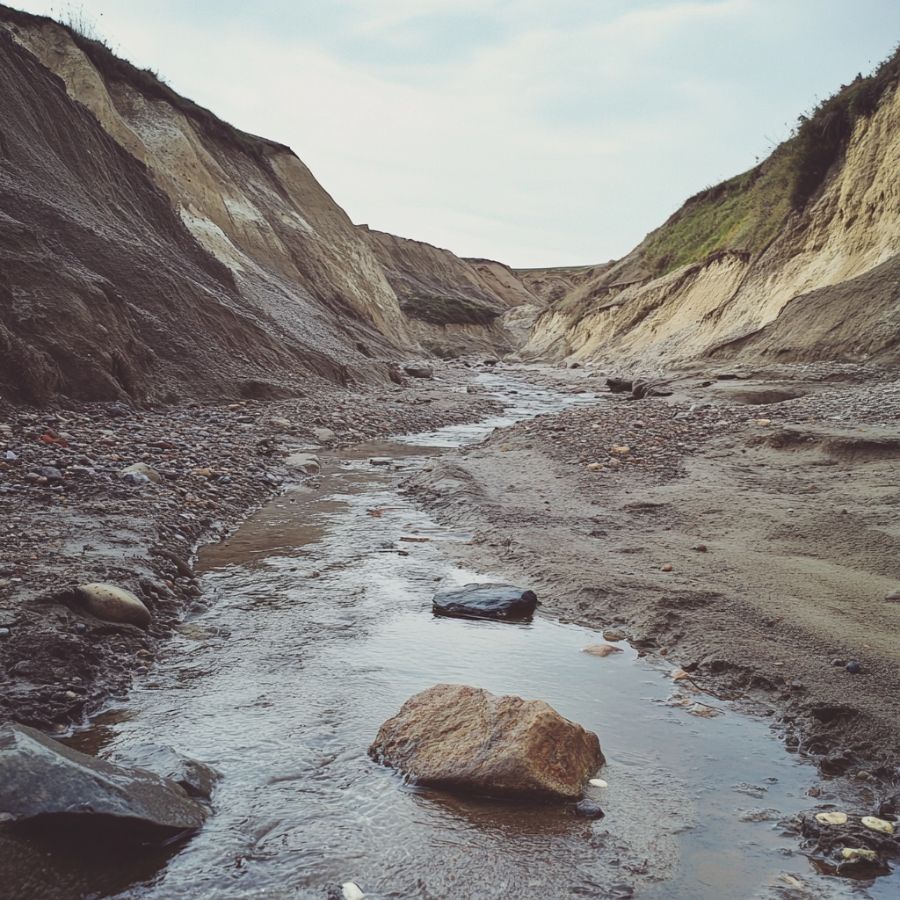
Look for turquoise in riverbeds. Over time, water flow can expose hidden stones.
Sediment may hold the gems you’re after. Be prepared to dig through gravel and dirt to find them.
Abandoned Mines
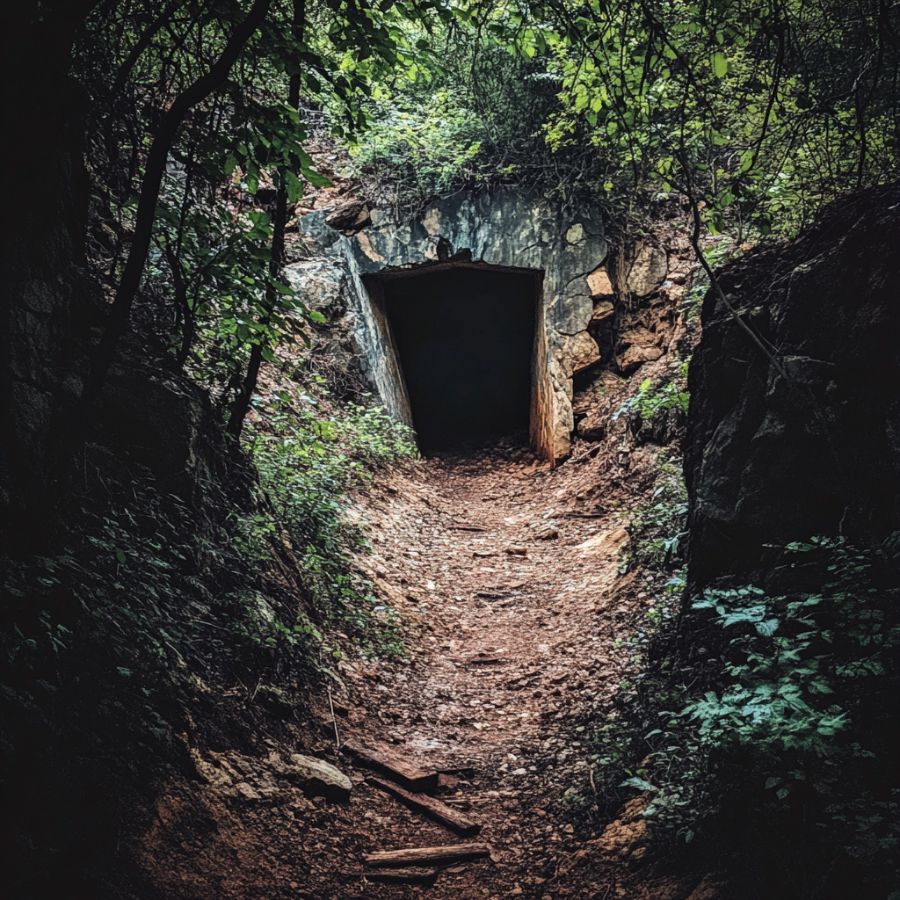
Old mines can be treasure troves for turquoise. These sites often have loose rocks where turquoise might be hiding.
Always be careful while exploring abandoned areas, though.
Hillsides
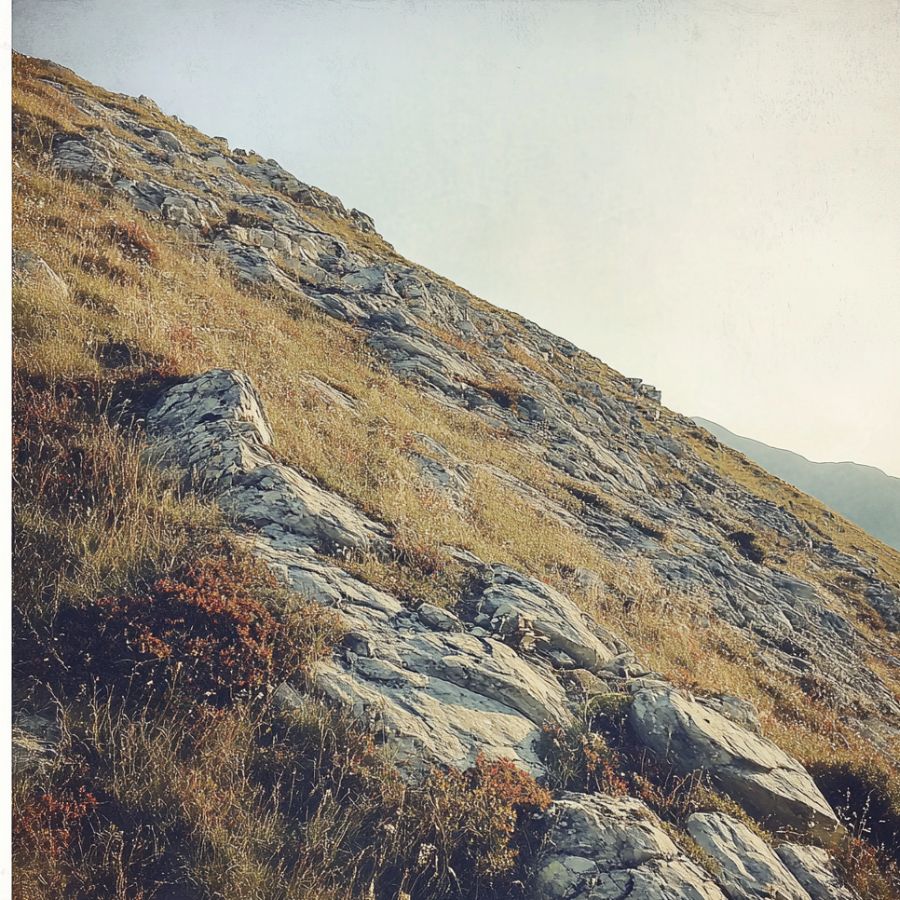
Check hillsides, especially where erosion is visible. Rain and wind can uncover layers of earth, exposing turquoise.
It’s a bit of a hunt, but it can be rewarding. Sometimes, you’ll find small stones just lying on the surface.
Rocky Outcrops
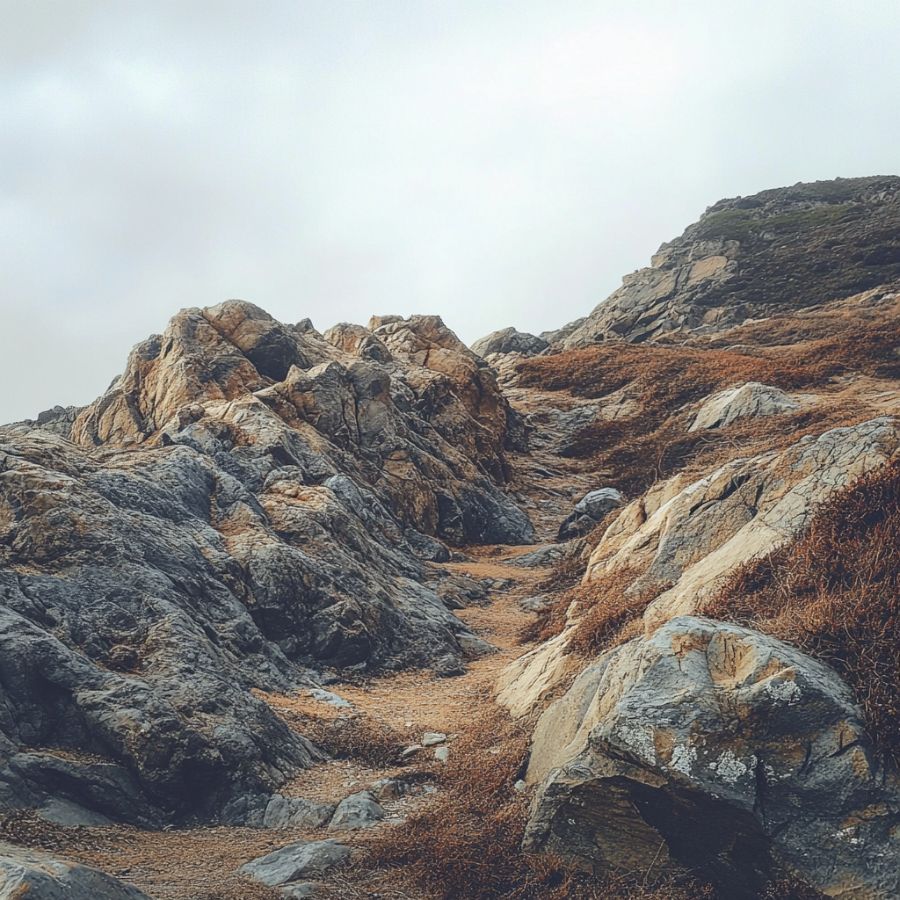
Rocky outcrops are great places to search. They are full of minerals and might have turquoise.
Explore the cracks and crevices. Turquoise often hides in these tight spaces.
The Types Of Turquoise Found In Arizona
Diving into the world of turquoise in Arizona reveals a spectrum of colors, qualities, and names that reflect the state’s diverse geology. Here are the distinct types of turquoise hidden under the state’s surface:
- Bisbee turquoise
- Kingman turquoise
- Morenci turquoise
- Sleeping Beauty turquoise
The Best Places To Find Turquoise in Arizona
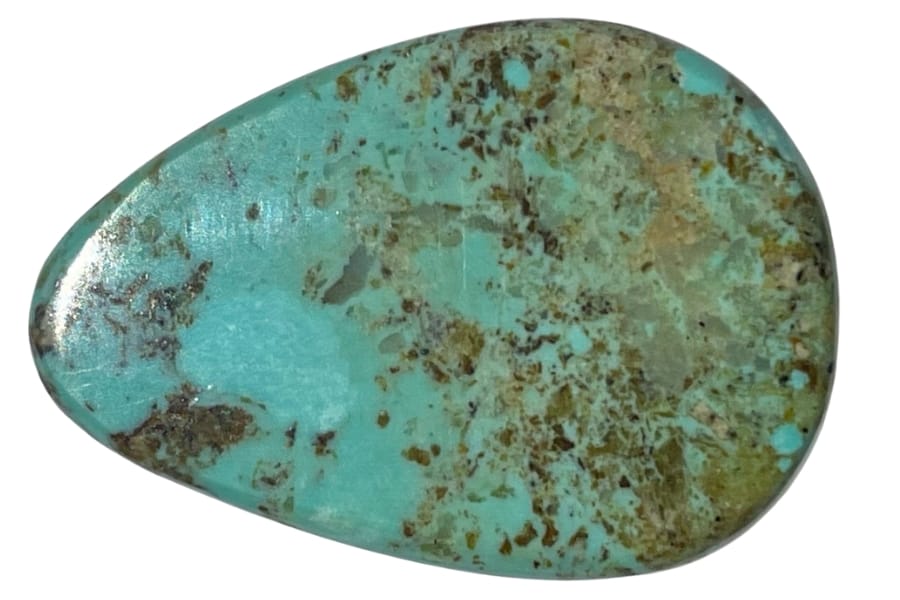
We’ll start by listing our favorite places in the state to look for turquoise. There are many excellent locations to mine for gems in Arizona, but only a few are suitable for finding turquoise specimens. Some of these places aren’t as well-known, but they often have great opportunities for searching.
Always Confirm Access and Collection Rules!
Before heading out to any of the locations on our list you need to confirm access requirements and collection rules for both public and private locations directly with the location. We haven’t personally verified every location and the access requirements and collection rules often change without notice.
Many of the locations we mention will not allow collecting but are still great places for those who love to find beautiful rocks and minerals in the wild without keeping them. We also can’t guarantee you will find anything in these locations since they are constantly changing.
Always get updated information directly from the source ahead of time to ensure responsible rockhounding. If you want even more current options it’s always a good idea to contact local rock and mineral clubs and groups
Canyon Creek
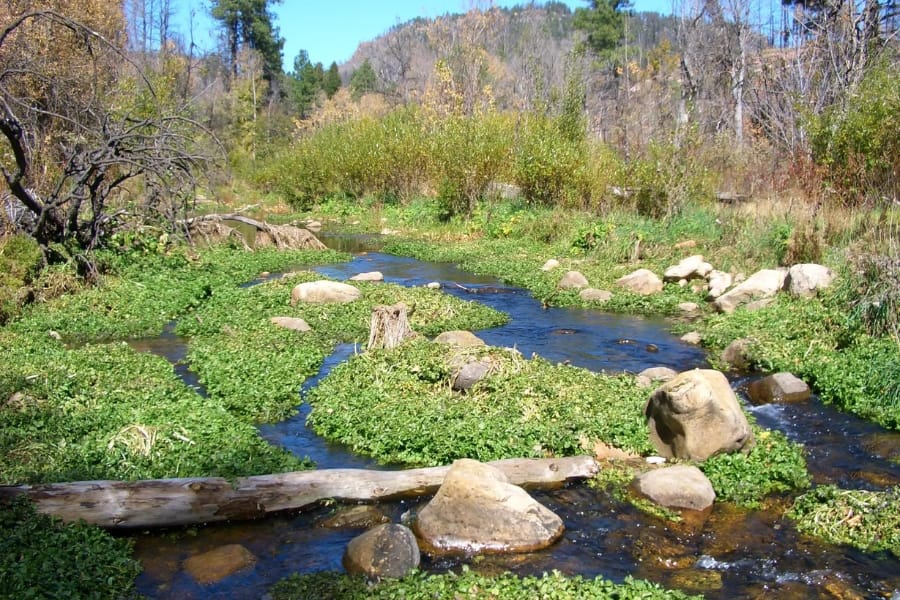
Canyon Creek, a hidden gem in Arizona, is a dream spot for adventurers and turquoise hunters.
Tucked away in the scenic region of the Tonto National Forest, this area is a haven for outdoor enthusiasts and a prime location for those on the quest for turquoise.
What makes Canyon Creek special? Well, it’s all about the unique combination of its history, geology, and the thrilling promise of discovery!
A long time ago, there were volcanoes all over the area around Canyon Creek. The ground was full of minerals, including copper, an essential part of the creation of turquoise.
That was millions of years ago, and now these same lands are full of old, dry riverbeds and rock formations perfect for hiding turquoise. As rainwater seeps through rock, it breaks down minerals like copper. Over time, this turns the cracks and spaces in the earth into turquoise.
Not many people know about Canyon Creek compared to other mining areas, which makes it feel like a secret waiting to be found!
Before you bring anything home, make sure you’ve read up on the State of Arizona’s most recent collecting regulations.
Where we found turquoise in Canyon Creek
The dry riverbeds of the creek and the rock formations around it is a good hiding spot for turquoise.
DON'T MISS OUT ON ANY GREAT FINDS!
While you're out searching for Geodes you're going to find a lot of other interesting rocks and minerals along the way. The last thing you want to do is toss out something really interesting or valuable. It can be easy to misidentify things without a little guidance.
We've put together a fantastic field guide that makes identifying 140 of the most interesting and valuable rocks and minerals you will find REALLY EASY. It's simple to use, really durable, and will allow you to identify just about any rock and mineral you come across. Make sure you bring it along on your hunt!
Cerbat Mountains
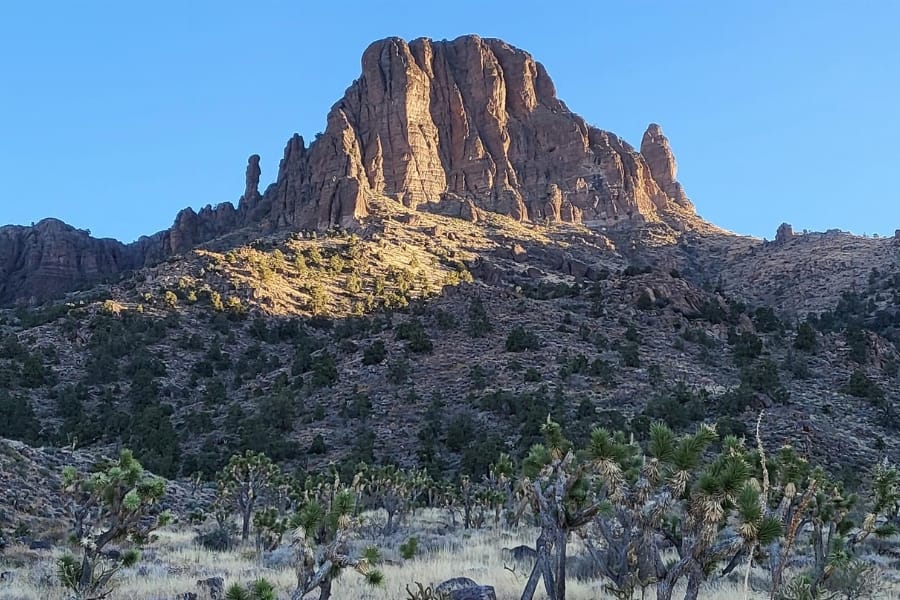
People who love rocks, especially those looking for the famous turquoise, will love the Cerbat Mountains. These mountains hold the secrets of the earth’s treasures and whisper stories of Arizona’s long mining history.
They have beautiful views and are a great place for hikers. They also have several mineral sites because volcanoes formed them, and mineral-rich fluids once flowed through them.
The turquoise here is known for its high-quality blue-green hues, which are admired worldwide.
While the actual mining is controlled and requires permission, nearby areas offer small dig-your-own opportunities for enthusiasts.
Where we found turquoise at the Cerbat Mountain
The Kingman mine, located in the Cerbat Mountain range, is one of America’s oldest and largest turquoise mines. It’s famous for producing turquoise with a delightful range of colors, often intermingled with intriguing patterns of black matrix.
Castle Dome Mountain
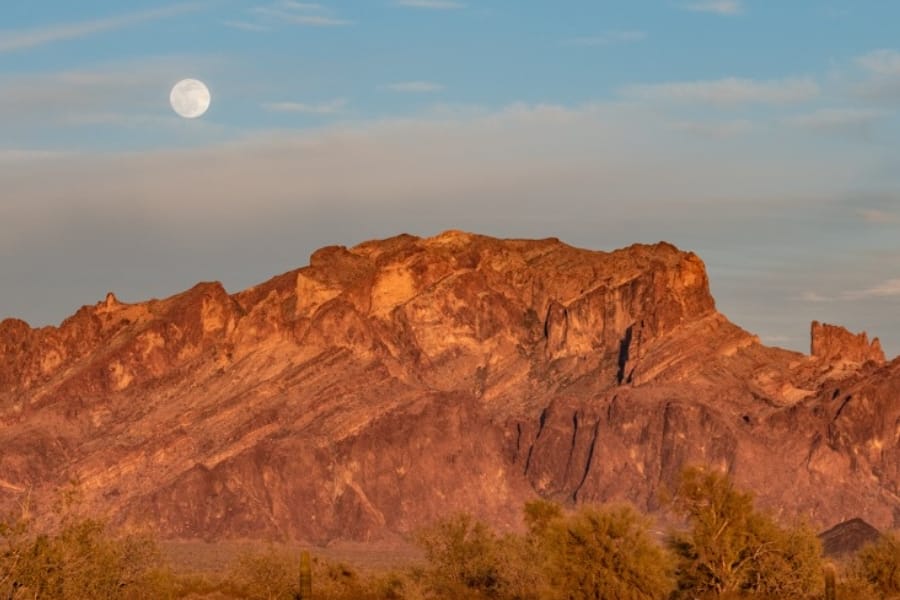
Castle Dome Mountain stands tall and proud in the state, but its rough peaks hide more than just beauty. This mountain, part of the Castle Dome Mountains range, contains minerals that make Arizona beautiful, especially turquoise.
The area, north of Yuma, is full of history, from old Native American trails to the busy mining years of the 1800s and 1900s.
This region was once a hotspot for volcanic activity. The volcanoes brought up a wealth of minerals, including copper, deep within the earth. The kind of turquoise here has an amazing range of blue colors, often mixed with grey or brown lines called a matrix.
Large-scale mining around Castle Dome is no longer as popular as it used to be, but the mountain is still a reminder of Arizona’s rich mining history.
Where we found turquoise at the Castle Dome Mountain
The area that is part of the Castle Dome District can yield several turquoise specimens and other minerals.
Sleeping Beauty Peak
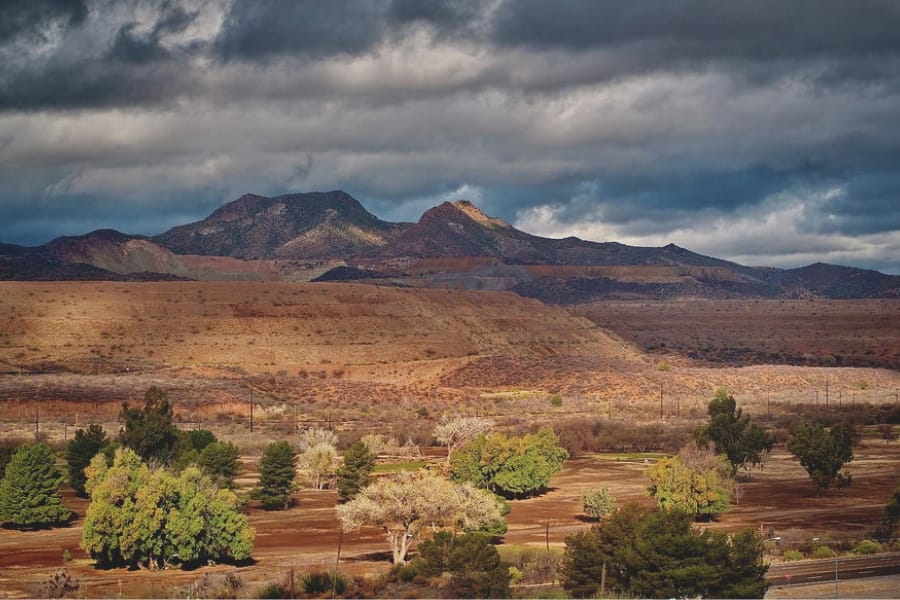
Sleeping Beauty Peak is more than just a mountain. It’s where history, magic, and geology all come together. This mountain is close to the town of Globe, and its name comes from how it looks like a sleeping woman.
It also hides a secret: it’s home to the famous Sleeping Beauty Mine, which has produced some of the most beautiful turquoise in the world. This isn’t just turquoise; the Sleeping Beauty variety is known for being solid and light blue, with no webbing or matrix, making it look like pieces of the sky!
For people who love turquoise, Sleeping Beauty Peak is a great example of how nature can create beauty over time. It is a real gem in Arizona’s landscape!
Where we found turquoise at Sleeping Beauty Peak
Most of the turquoise here came from the Sleeping Beauty Mine, near Sleeping Beauty Peak, where the place got its name. This mine had a lot of turquoise, more than any other in the United States.
Turquoise Ridge
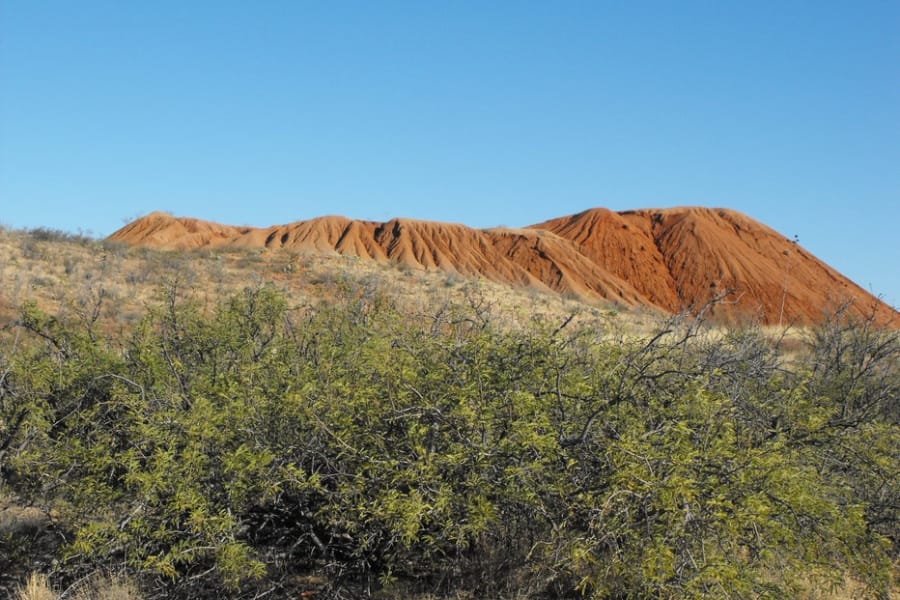
Phoenix’s Turquoise Ridge is a dream place for people who love the cool, soothing color turquoise. There’s more to this place than just its name. In real life, turquoise has been found there while people were exploring.
In Arizona’s rough and beautiful landscapes, Turquoise Ridge invites us to discover the beauty above ground and the mysteries below.
The turquoise from Turquoise Ridge is super special because of its quality and unique color, which makes it stand out in a jewelry box or a collector’s cabinet.
Turquoise Ridge is a great place to find turquoise, but remember you can’t just go there and take stones. But for people who love nature’s underground art, just learning about Turquoise Ridge’s part in the history of turquoise is exciting!
Where we found turquoise at Turquoise Ridge
Turquoise can be found in arid regions of the Turquoise Ridge, where copper-rich rocks have been exposed to rainwater and soil leaching over extended periods, leading to the formation of this semi-precious stone.
Other Great Places To Find Arizona Turquoise
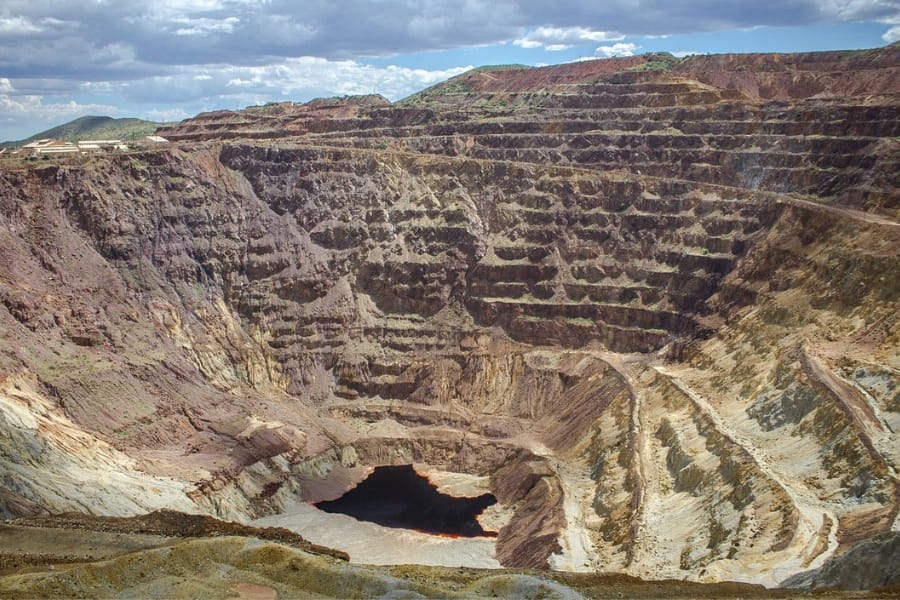
After discussing our favorites, We wanted to discuss the other places on our list. We’ll list a few more areas where we’ve been successful below, and then we’ll break down each suggestion by county.
Our recommendations by county
| County | Location |
| Cochise | Gleason-Courtland District, Turquoise Mountain |
| Cochise | Cole Mine |
| Cochise | Lavender Open Pit Mine |
| Cochise | Peace Hills |
| Gila | Miami area, south side of Porphyry Mountain |
| Graham | Greasewood Mountain |
| Mohave | Tiffany Turquoise Mine |
| Mohave | East of Mineral Park, slopes of Ithaca Peak |
| Mohave | On a small peak at the Mineral Park area |
| Mohave | Kingman area, side of the Cerbat Range |
| Pima | Little Ajo Mountains |
| Pima | Empire Mountains |
| Pima | Sierrita Mountains |
| Pima | Silver Bell Mine |
| Pima | Silver Bell Mountains |
Common Turquoise-Hunting Questions
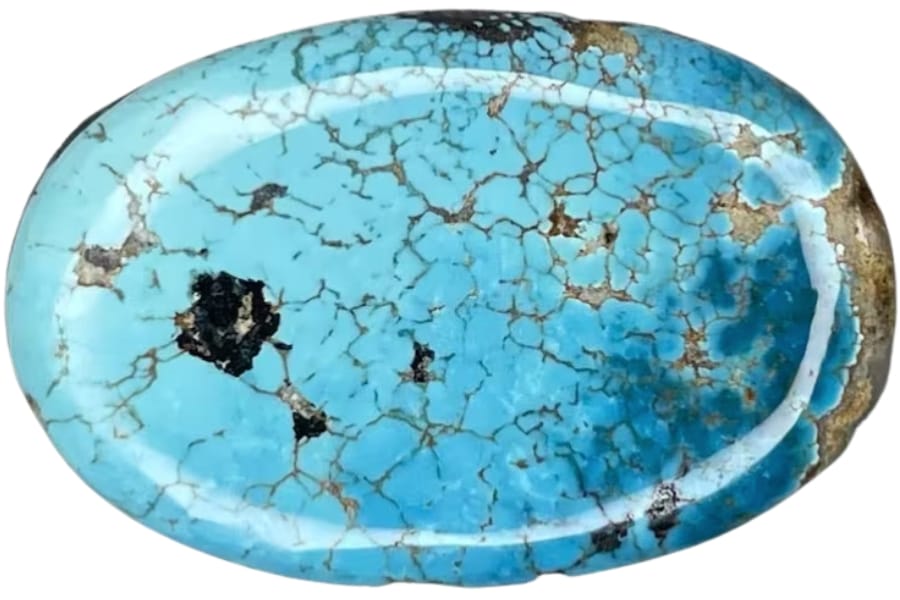
Below are some frequently asked questions about finding turquoise in Arizona that should also be answered:
Is it illegal to collect turquoise in Arizona?
In Arizona, it’s not illegal to collect turquoise or any other minerals, but there are rules and laws you must follow. It depends on who owns the land and how it’s managed in the area you want to explore.
If the land is privately owned, you need permission from the landowner. Trespassing on private property without consent is illegal. You can take home small amounts of rocks and minerals on public lands.
But the rules can differ if the land is managed by the U.S. Forest Service, the Bureau of Land Management (BLM), or another state or federal agency. Most of the time, a permit or claim is needed for commercial collection.
For example, the Kingman Mine has areas for rockhounding open to the public. For a fee, you may be able to look for turquoise. But there are strict rules that you must follow on these sites.
The Best Places To Buy Turquoise In Arizona
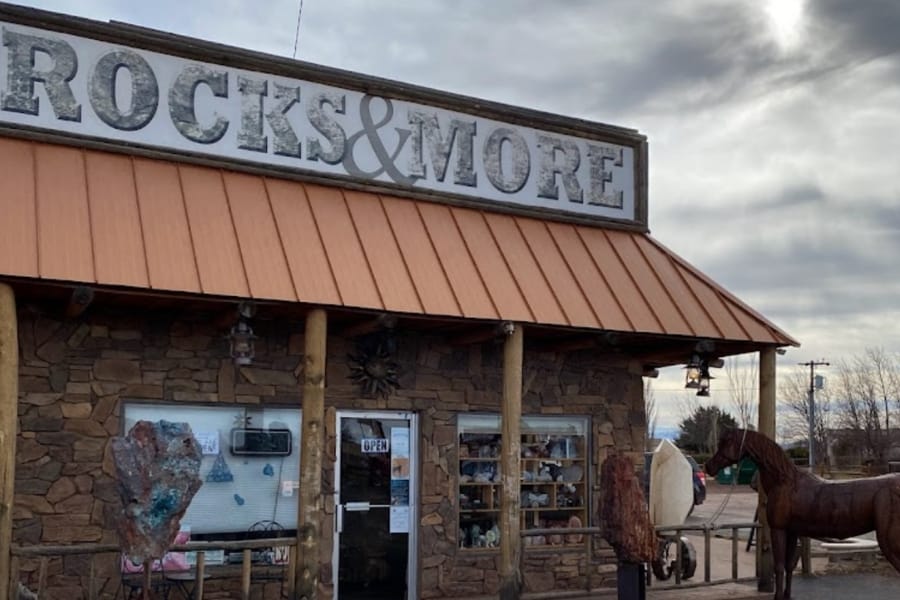
Getting turquoise in your hands will always feel great if you’re an enthusiast or collector. Some people don’t like the dirty and hard work, though. This is for you if you want to find turquoise without having to do that!
Here are some of our favorite rock shops in the area where you can find and buy turquoise of our choice:
- Black Market Minerals – 5000 S Arizona Mills Cir, Tempe, AZ 85282, United States
- Everything Just Rocks – 2235 W 1st St Unit 104-105, Tempe, AZ 85281, United States
- Miners Rock Shop – 1103 W Fairmont Dr, Tempe, AZ 85282, United States
- Natural Expressions – 13802 E Williams Field Rd, Gilbert, AZ 85295, United States
- Rocks & More – 189 South, AZ-64, Williams, AZ 86046, United States

